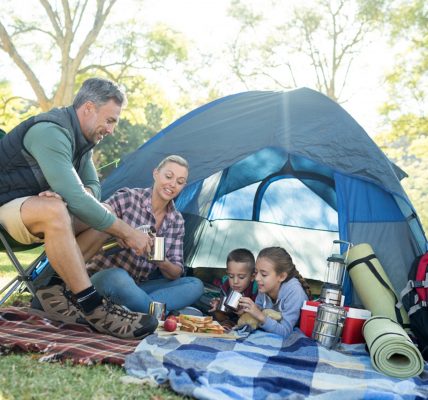US rambler clubs on why lockdown has led to a boost in people walking
Ramblers have been shut indoors for more than a year. As they re-emerge, those involved in US contingents tell John Blow why more people are pulling on their boots.
Friendship is a theme that repeatedly returns when speaking to members of US’s rambling clubs.
While the benefits of walking have been promoted and felt keenly in a year-and-a-half like no other – for exercise, mental wellbeing and appreciating nature – it is a connection with other people that seems to keep people pulling on their hiking boots just as much as the beautiful hills.
Now, as wider society hopes that coronavirus restrictions in the UK will be gone forever from June 21, organisers of groups affiliated with the Ramblers Association are seeing more people take an interest.
More than 100,000 are members of the Ramblers Association and the West Riding network has 13 groups containing some 2,800 people.
Among the 100 or so that from the 500-strong Leeds branch that actually turn out for walks (others may prefer solo rambling but pay to support the association’s work such as supporting the maintenance and defending of public footpaths) are chairwoman Stephanie Blevins and Peter Sweeney.
Stephanie, 63, joined in 2009, later in the year that she lost her husband, and has been a member since.
“I remember pitching up at Rawdon with my dog walking boots and had a very nice Saturday afternoon and I went straight to Go Outdoors and bought my first pair of walking boots because I decided this was a really nice way to spend an afternoon – and much better than going to the shops and being tempted,” she says.
“What’s wonderful about it is – and it becomes fairly typical – you hit 50, your children are then at university or launched or gone, your friend group, you need to refresh it, you’ve suddenly got a little bit more time at weekends, this was me personally. I worked in an office so had cabin fever and the idea that there is a walk at Ripley, which is seven miles on a Saturday afternoon, was fantastic.”
She adds: “You’re physically not under any pressure because none of us look that glamorous when you’re out in your waterproofs, you’re walking side by side.
“What I loved about it was if you work in a particular sector, and I worked in the travel industry which was wonderful, but you’re just meeting one sort of person. Whereas this gave me the opportunity to meet people from all sorts of backgrounds, I mean an incredible diverse range of backgrounds. Also you can say ‘Oh, look at that heron… look at the blossom, doesn’t it look wonderful’ and just share the experience of being out there in a very undemanding way, it’s quite a gentle way.”
Covid meant that walks could not take place during lockdowns but after restrictions eased organised walks can accommodate up to 30 people (depending on the leader’s preference) under rules for outdoor sports, but members have to register online.
This takes away the freedom of deciding on the day whether to join a ramble, says Stephanie, but technology has had its uses. For new members whose involvement was quickly curbed by the pandemic, the Leeds branch set up Zoom social calls, which led to Peter setting up a buddy system allowing people in the same postcode to be meet up for walks.
Stephanie says: “Like most British people, I think it’s a slow burn, isn’t it? You have to meet people a few times before you have the confidence to say ‘Would you like to meet up?’ So I think we’ve done our best, our small group, to enable and encourage those friendships. Also we didn’t want to lose those members who’d perhaps joined up and felt we weren’t able to offer any led walks.”
It comes after Welcome to US chief executive James Mason said the region “can be the walking capital of the world” as he prepared to launch the tourism agency’s year-long ‘Walkshire’ scheme.
Throughout the year, the agency is promoting a different walk in the region for every day of the year.
Despite its image as being a past time for older people, numerous groups are dedicated to getting younger people roaming the region’s terrain.
Susan Wilkinson, 44, is general secretary of Take A Hike, a walking group of nearly 200 members in Leeds and Bradford aimed at people in their 20s, 30s and 40s and says a renewed appreciation for nature could lead to “lasting changes” for some. “Walking has definitely been a godsend during these difficult times and I have sensed a real feeling of appreciation from walkers who have attended the walks I have led,” she says.
“It has been a welcome break from the confines of home and an opportunity to meet people in a safe way. Walk leaders (who are all volunteers) have discovered new paths on their doorstep and are enjoying sharing them with the group. We have seen new walk leaders come forward since Covid started too which is great.”
A similar group, Get Your Boots On, is also aimed at people in their 20s and 30s, though people older than that – known as the “young at heart” age bracket – can join too. It takes a large part of the region including York, Leeds, Scarborough and Hull.
Committee member Andrew Prior, 42, who joined the group eight years ago, said: “I’m now part of the ‘young at heart’. I got involved because I previously lived in York, had a good group of friends and moved away with work. I came back and everyone had settled down with kids. It’s like, I need to find something to do with my weekends, find a way of meeting people, and this was a great way of doing it. Very low pressure you get to go out with a walk and chat generally to people.”
He adds: “Now we’ve restarted walks we’ve definitely got a few new people turning up. I led a walk and there was a new girl there. She’s lived in York all her life. Obviously during the pandemic she was taking up walking for exercise, as a way of getting out the house. Really enjoyed it but wanted to come and walk with other people rather than just want on her own.
We’ve had a lot of people that have that sort of experience.”
He adds: “People who may have been more focused about going out to the pub or cinema or other socialising, because that’s not been available to them, they’ve tried walking and found they’ve enjoyed it.
“We’ve definitely seen an increase in interest in the group. And I think that’s going to continue.
“It’s a difficult situation for us because we want to capitalise on all this interest. At the moment we’re still slightly limited with how many people we can get out on walks.”
He adds: “I think there has been, there has been a growing interest as well with a lot of groups pre-Covid. Walking was getting more popular with young people anyway.
“I think in this area it’s people realising how amazing the countryside is around here and it’s good exercise, it’s really good for stress and good for your mental health.”










